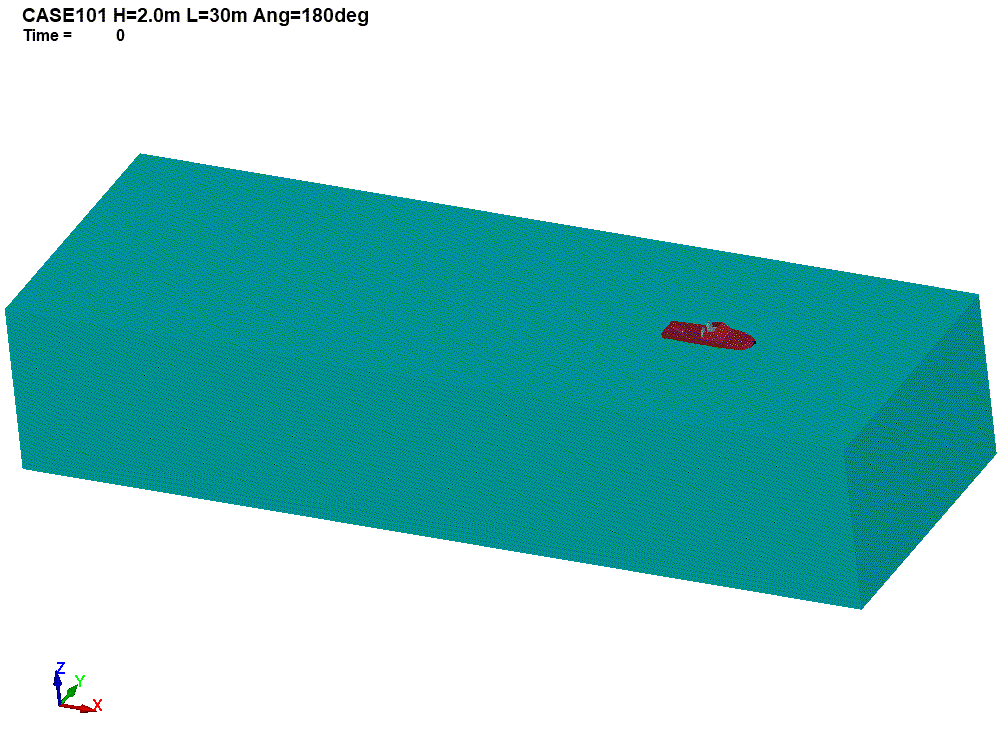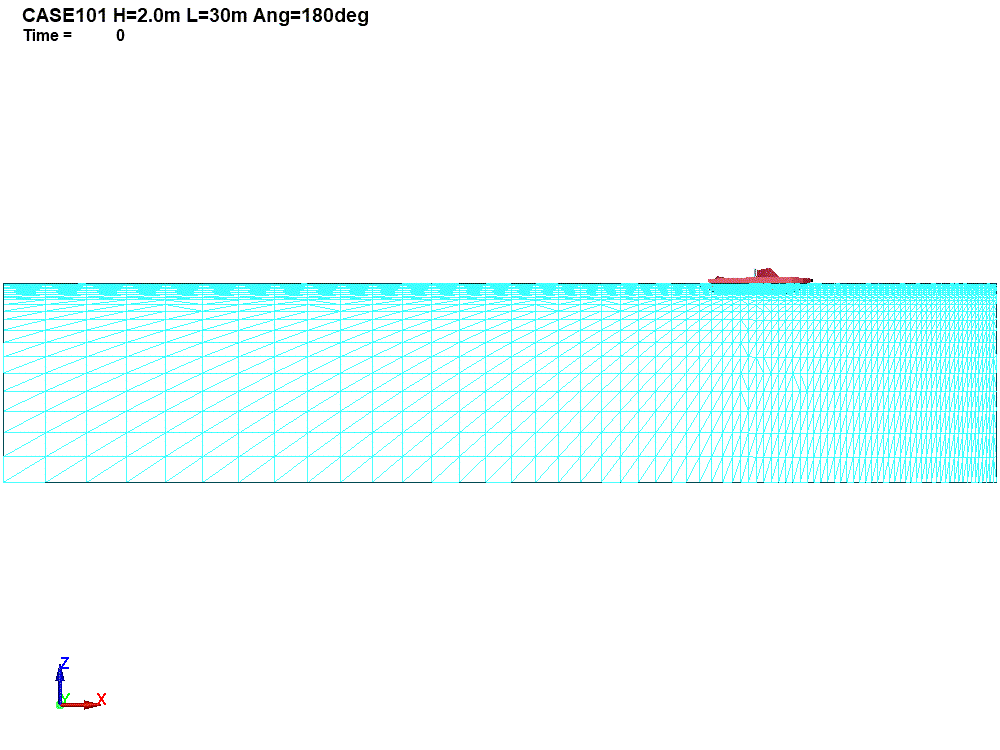~Technology for simulating ship accidents using numerical wave tanks based on state-of-the-art CAE technology (ICFD + FEM) ~
ICFD+FEM
“Marine accident simulation technology (MAST)” is such technology that realistically reproduces ship accidents phenomena at sea inside a computer. Consequently this technology contributes to the investigation of the causes of marine accidents. NMRI is engaged in R&D and their applications of “Marine accident simulation technology (MAST)”using numerical analysis. With the significant progress of computer technology, especially High-Performance Computing (HPC), the present technology is becoming more and more realistic and practical. It took one or two weeks in the past for one calculation, however, nowadays, it takes only a few hours or a few days for the same calculations by using the latest parallel computer servers (PC clusters).
The main feature of this technology is that it combines ICFD (Incompressible Computer Fluid Dynamics) based on fluid analysis, and nonlinear FEM (Finite Element Method) based on structural analysis in order to carry out fluid-structure coupled analysis. In conventional CFD, structures, such as ships, are typically assumed to be rigid and no deformation takes place. However, the present new technology integrates fluid and structural analysis through fluid-structure interaction analysis. This approach allows for fluid analysis that considers the deformation and fracture of the ships. This technology has made it possible to analyze the deformation of a ship's hull in waves, such as breaking or sinking.
In this calculation, a “numerical wave tank” simulating the ocean including waves is modeled in a virtual space, and ships are floating in the tank with wave generations in order to simulate ship accidents . Some examples of analysis are shown below.
<An example of analysis on a large container ship>
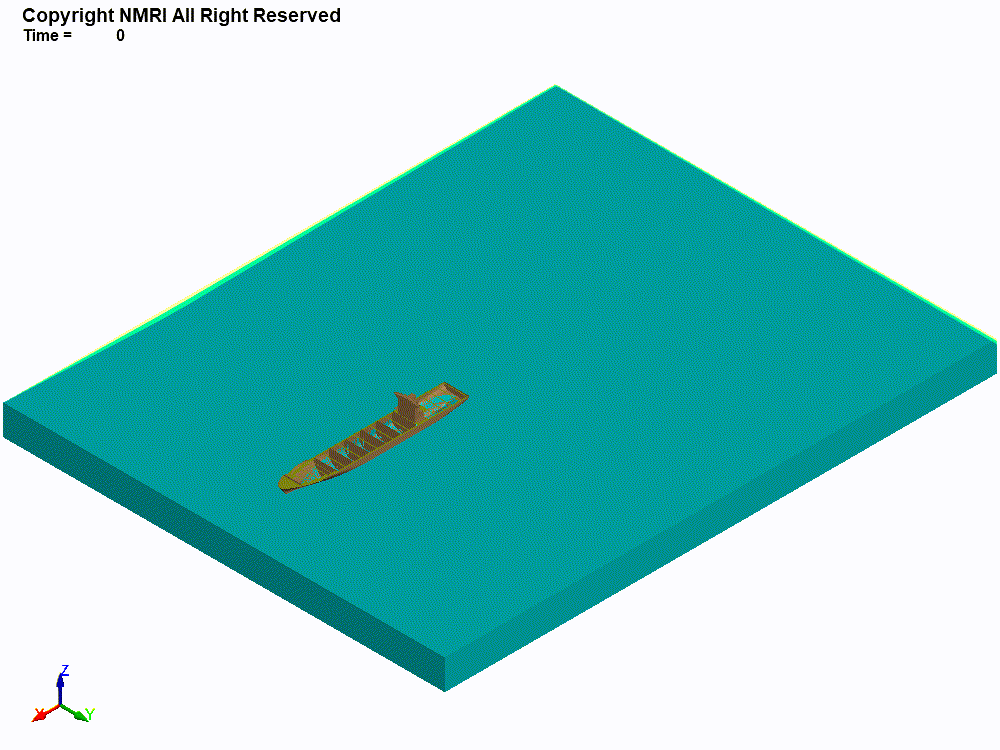
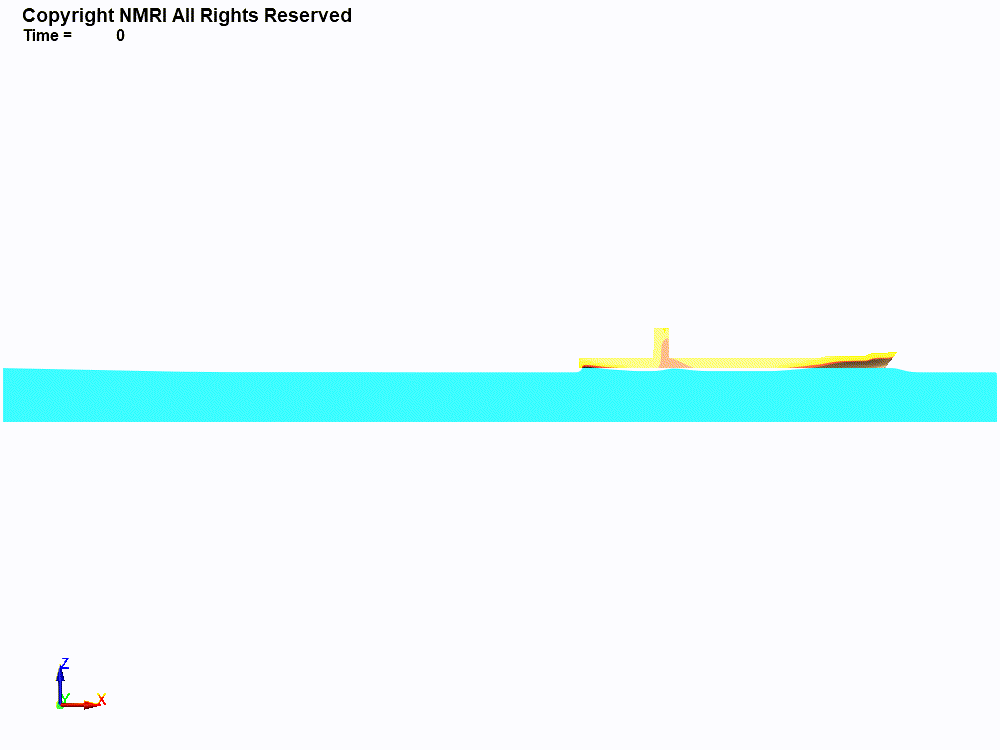
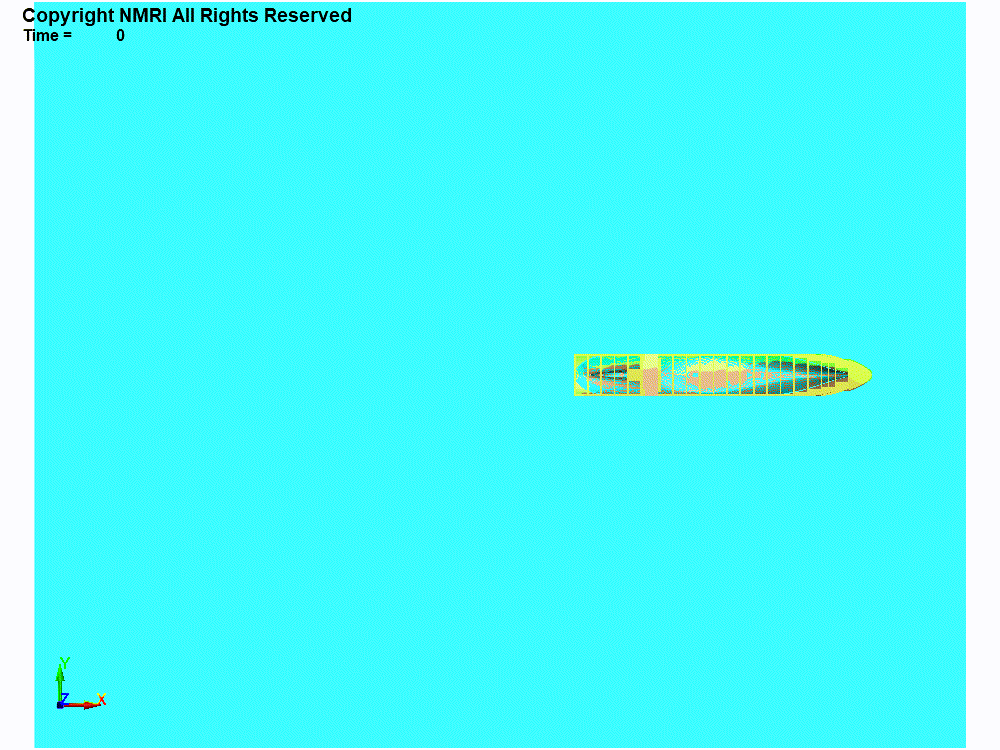
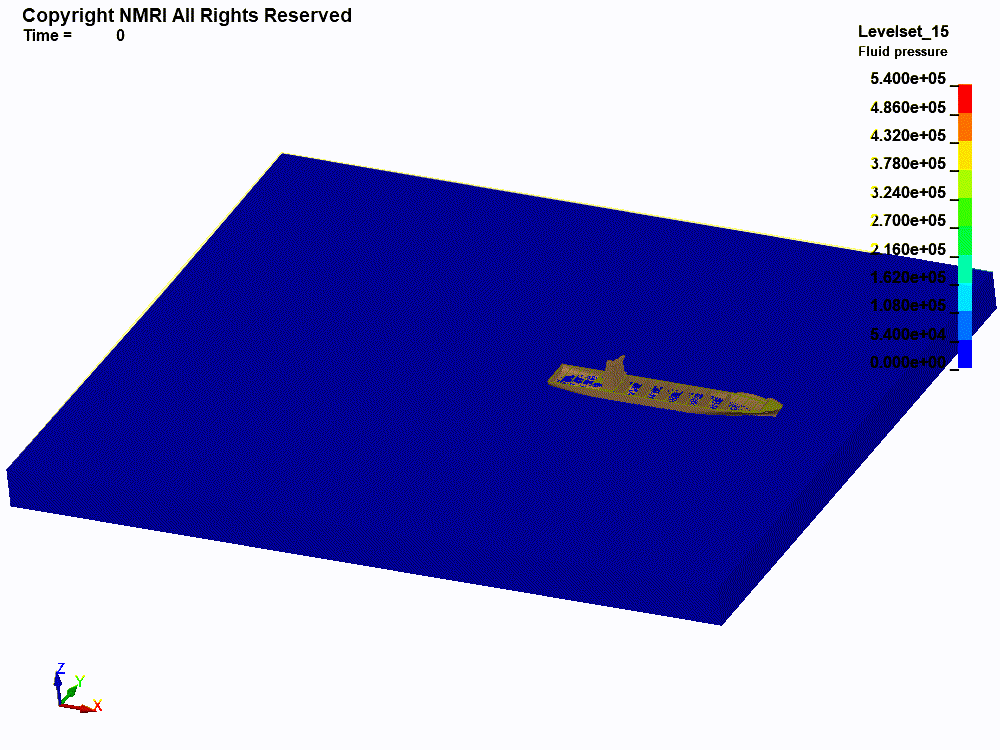
<<An example of analysis on a small boat>
